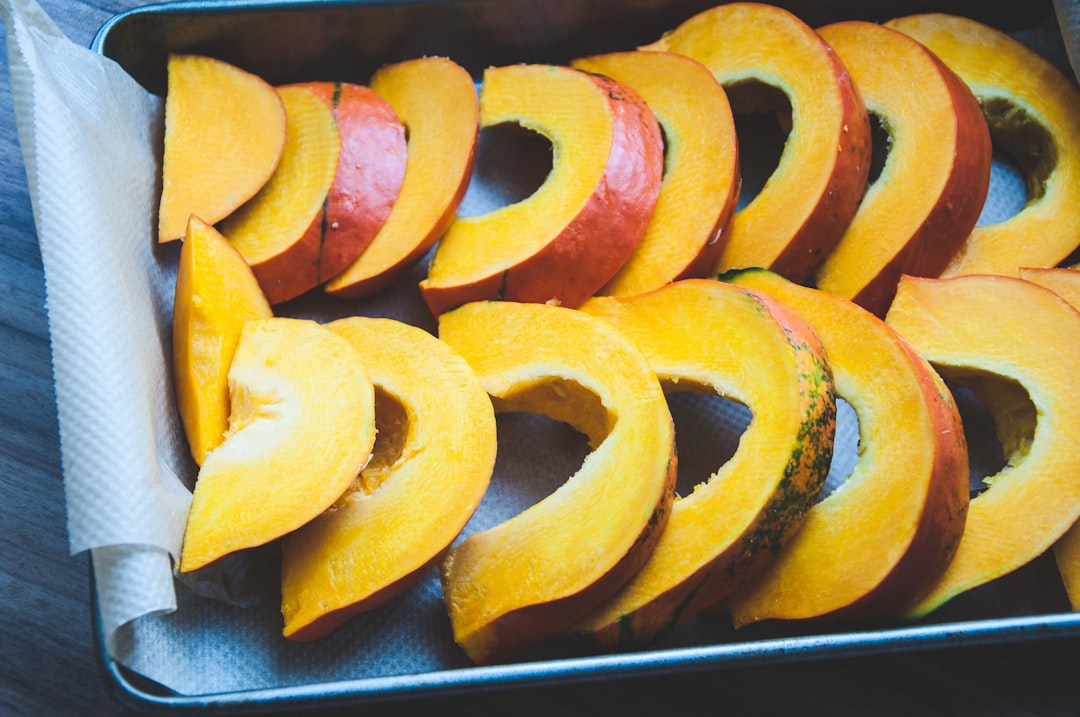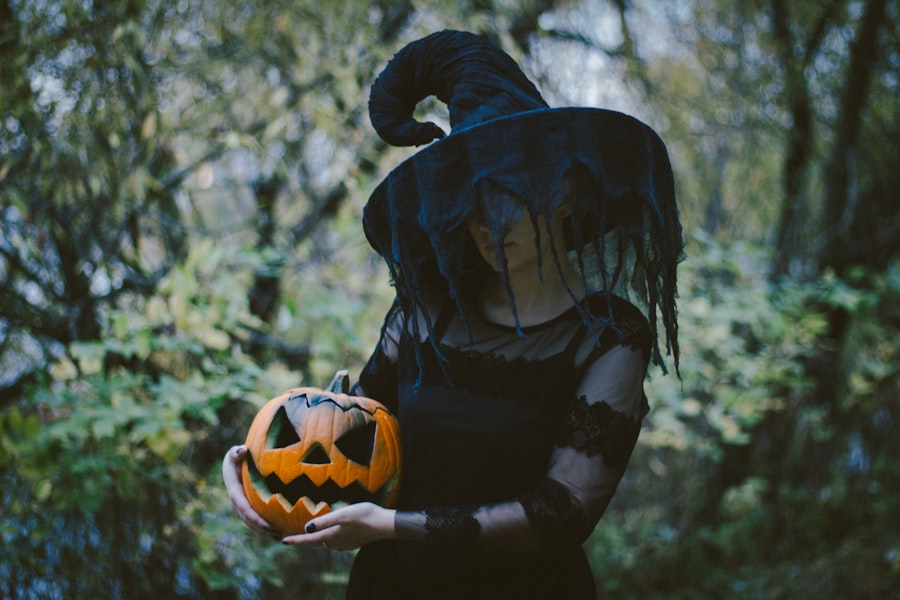Pot-Grown Pumpkins: How to Grow Your Own!

Pot-grown pumpkins are a great option for beginners who want to try their hand at gardening. Growing pumpkins in pots offers several benefits, including the ability to control the growing environment, save space, and easily move the plants if needed. In this article, we will discuss everything you need to know about growing pumpkins in pots, from choosing the right pot and seeds to harvesting and storing your pumpkins.
Key Takeaways
- Pot-grown pumpkins are a great option for beginners who want to grow pumpkins in small spaces.
- Choosing the right pot size and material is important for the health and growth of your pumpkin plant.
- Selecting high-quality pumpkin seeds that are suited for pot-growing is crucial for a successful harvest.
- Preparing the soil with the right nutrients and pH level is essential for healthy pumpkin growth.
- Proper watering and fertilization are key to ensuring your pumpkin plant thrives and produces a bountiful harvest.
Choosing the Right Pot for Your Pumpkin Plant
When it comes to choosing a pot for your pumpkin plant, size and depth are important considerations. Pumpkins have deep root systems, so you’ll need a pot that is at least 18 inches deep. The width of the pot should be large enough to accommodate the sprawling vines of the pumpkin plant.
Material options for pots include plastic, ceramic, and fabric. Plastic pots are lightweight and easy to move, while ceramic pots are more aesthetically pleasing but can be heavy. Fabric pots are a good option for promoting healthy root growth as they allow for better drainage and air circulation.
Drainage is crucial for the health of your pumpkin plant. Make sure your pot has drainage holes at the bottom to prevent water from pooling and causing root rot.
Selecting the Best Pumpkin Seeds for Pot-Growing
Not all pumpkin varieties are suitable for container gardening. Look for compact or bush varieties that have been specifically bred for small spaces. These varieties tend to have shorter vines and smaller fruit, making them ideal for pot-growing.
When selecting pumpkin seeds, consider factors such as maturity time, disease resistance, and flavor. It’s also a good idea to choose seeds from reputable sources to ensure quality and reliability.
Some recommended pumpkin varieties for container gardening include ‘Baby Boo,’ ‘Jack Be Little,’ and ‘Sugar Pie.’ These varieties produce small pumpkins that are perfect for decorating or making pies.
Preparing the Soil for Your Pot-Grown Pumpkins
| Soil Preparation Steps | Metrics |
|---|---|
| Clear the area of debris and weeds | Time taken to clear the area |
| Loosen the soil with a garden fork | Depth of soil loosened |
| Add compost or well-rotted manure | Amount of compost/manure added |
| Work in a balanced fertilizer | Amount of fertilizer used |
| Test soil pH | pH level of soil |
| Adjust soil pH if necessary | Amount of pH adjuster used |
Pumpkins require well-draining soil that is rich in organic matter. A good soil mix for pot-grown pumpkins can be made by combining equal parts of compost, peat moss, and perlite or vermiculite. This mixture provides the necessary nutrients and drainage for healthy pumpkin growth.
Before filling the pot with soil, make sure to place a layer of gravel or broken pottery at the bottom to further improve drainage. Fill the pot with the soil mix, leaving about an inch of space at the top for watering.
Watering and Fertilizing Your Pumpkin Plant
Proper watering is essential for the success of your pot-grown pumpkin plant. Water your pumpkin regularly, keeping the soil consistently moist but not waterlogged. Aim to water deeply, ensuring that the water reaches the roots.
Fertilizing your pumpkin plant will help promote healthy growth and fruit production. Use a balanced fertilizer with equal amounts of nitrogen, phosphorus, and potassium. Apply the fertilizer according to the package instructions, usually every two to three weeks during the growing season.
Protecting Your Pumpkin Plant from Pests and Diseases

Pumpkins are susceptible to a variety of pests and diseases, including aphids, powdery mildew, and squash bugs. To prevent these issues, practice good garden hygiene by removing any dead or diseased plant material and keeping the area around your pumpkin plant clean.
If you notice signs of pests or diseases, there are several treatment methods you can try. For example, spraying a mixture of water and dish soap can help control aphids, while applying a fungicide can help combat powdery mildew. It’s important to identify the specific pest or disease affecting your pumpkin plant before choosing a treatment method.
For those who prefer organic pest control options, consider using natural predators like ladybugs or introducing beneficial nematodes to control pests. Neem oil is also an effective organic option for treating common pumpkin pests.
Training Your Pumpkin Vine to Grow Vertically
Training your pumpkin vine to grow vertically has several benefits, including saving space and reducing the risk of disease. To train your pumpkin vine, gently guide the main stem upwards using a trellis or other support structure. As the vine grows, secure it to the support structure using soft ties or twine.
Support structures for vertical growing can be made from materials such as bamboo stakes, wire mesh, or even old ladders. Make sure the structure is sturdy enough to support the weight of the growing pumpkins.
Harvesting and Storing Your Pot-Grown Pumpkins
Knowing when to harvest your pot-grown pumpkins is important to ensure they are at their peak ripeness. Look for signs such as a fully colored rind, a hard skin that resists puncture with your fingernail, and a dried-out stem. Once your pumpkins are ready to harvest, use a sharp knife or pruning shears to cut them from the vine, leaving a few inches of stem attached.
To store your harvested pumpkins, choose a cool, dry place with good air circulation. Avoid stacking them on top of each other as this can cause bruising. With proper storage conditions, pumpkins can last for several months.
Creative Ways to Display Your Harvested Pumpkins
Once you’ve harvested your pot-grown pumpkins, there are many creative ways to display them. Use them for fall decorations by arranging them on your porch or creating a festive centerpiece for your dining table. If you’re feeling artistic, try carving intricate designs into your pumpkins for Halloween.
Pumpkins are also delicious and can be used in a variety of recipes. From pumpkin pie and pumpkin bread to roasted pumpkin seeds and pumpkin soup, there are endless possibilities for incorporating your homegrown pumpkins into your meals.
Troubleshooting Common Problems with Pot-Grown Pumpkins
Even with proper care, pot-grown pumpkins can sometimes encounter problems. Wilting or yellowing leaves can be a sign of overwatering or nutrient deficiencies. Adjust your watering schedule and consider adding a balanced fertilizer to address these issues.
If your pumpkin plant is not producing fruit, it may be due to a lack of pollination. You can hand-pollinate your pumpkin flowers by transferring pollen from the male flowers to the female flowers using a small brush or cotton swab.
Pest and disease issues can also arise, despite your best efforts. Regularly inspect your pumpkin plant for signs of pests or diseases and take appropriate action as soon as possible to prevent further damage.
Growing pumpkins in pots is a rewarding experience for beginners and offers several benefits. By choosing the right pot, selecting suitable pumpkin seeds, preparing the soil, and providing proper care, you can successfully grow pumpkins in containers. Remember to protect your plants from pests and diseases, train them to grow vertically, and harvest and store your pumpkins properly. Get creative with displaying your harvested pumpkins and don’t be afraid to troubleshoot any problems that may arise. Happy pot-growing!
If you’re looking to grow pumpkins in a pot, you’ll definitely want to check out this informative article from Lawn World. They provide a step-by-step guide on how to successfully grow pumpkins in containers, making it a perfect option for those with limited space or who simply prefer container gardening. From choosing the right pot size to selecting the ideal pumpkin variety, this article covers all the essential tips and tricks. So, if you’re ready to embark on your pumpkin-growing adventure, be sure to click here to read the full article: https://www.lawnworld.com/grow-pumpkins-in-a-pot.html.
FAQs
What is the best time to plant pumpkin seeds in a pot?
The best time to plant pumpkin seeds in a pot is in late spring or early summer when the soil temperature is at least 60°F.
What type of pot is best for growing pumpkins?
A large pot with a minimum of 5 gallons capacity is best for growing pumpkins. The pot should have drainage holes at the bottom to prevent waterlogging.
What type of soil is best for growing pumpkins in a pot?
A well-draining soil mix with a pH level between 6.0 and 6.8 is best for growing pumpkins in a pot. The soil should be rich in organic matter and have good water retention capacity.
How often should I water my pumpkin plant in a pot?
Pumpkin plants in a pot should be watered deeply once a week. The soil should be kept moist but not waterlogged. Overwatering can lead to root rot and other diseases.
What type of fertilizer should I use for growing pumpkins in a pot?
A balanced fertilizer with equal amounts of nitrogen, phosphorus, and potassium is best for growing pumpkins in a pot. Fertilize the plant every two weeks during the growing season.
How long does it take for a pumpkin plant to mature in a pot?
It takes about 90 to 120 days for a pumpkin plant to mature in a pot. The time may vary depending on the variety of pumpkin and growing conditions.
How do I know when my pumpkin is ready to harvest?
A pumpkin is ready to harvest when the skin is hard and the stem has turned brown. The pumpkin should sound hollow when tapped. Cut the stem with a sharp knife, leaving a few inches of stem attached to the pumpkin.



